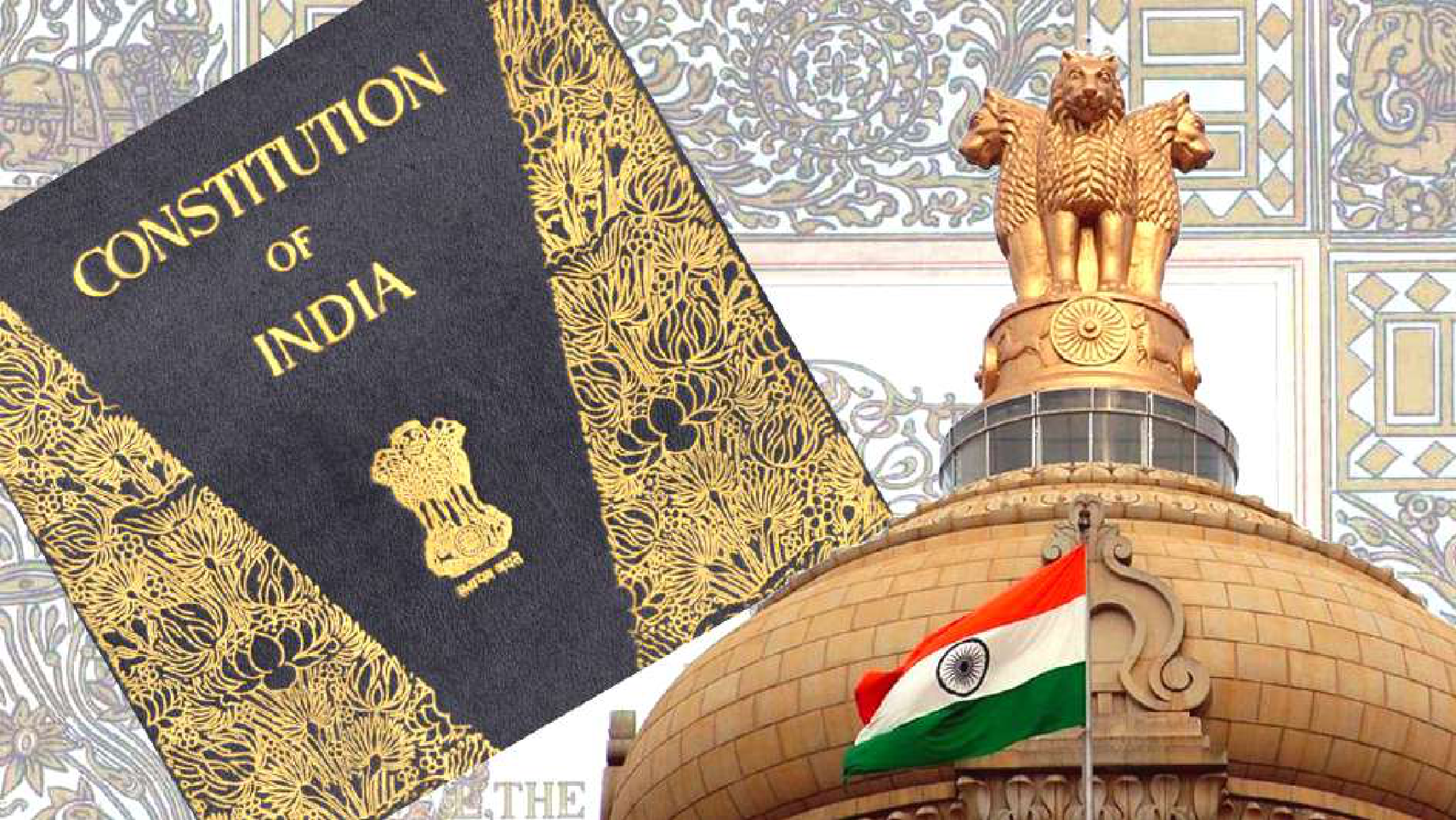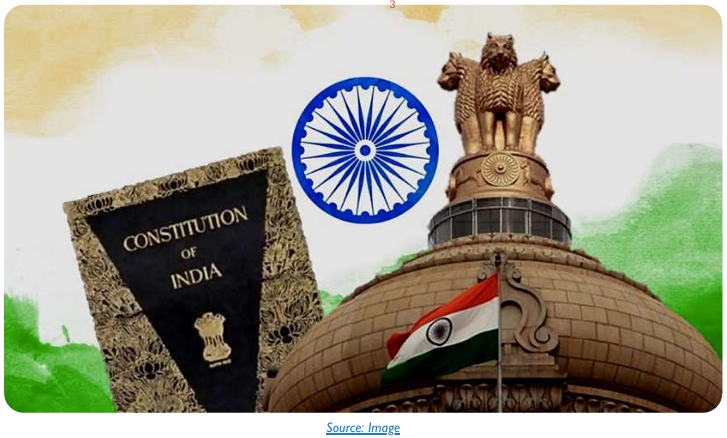Background
The context of the FRA legislation in India lies in the history of denial of rights of traditional forest dwelling communities during the colonial period as well as the post-independence era. During the pre-British era the forests were under the rule of the kings. The locals were allowed to inhabit, cultivate, graze cattle, and earn their livelihoods through forest resources without any restrictions58 . However, with the advent of the British, these people started being looked upon as ‘encroachers’ on their own land. By the 19th century, imperial needs had started dictating British interests in Indian forests and the British started taking control over vast tracts of forest land59 . It was during this period that centralized forest administration had started taking roots in India.
The first major attempt to assert state monopoly and legislate on forests was made during 1864-6560 through the enactment of the 1865 Forest Act. As stated by Gadgil and Guha (1992)61 , in the name of “scientific management, this Act was an attempt to obliterate centuries of customary use of the forests by rural population all over India.” Thereafter, the enactment of the 1878 act gave the colonial government powers to declare any forest land as ‘government land’, resulting in reservation of forests62 . Then, in 1894, the National Forest Policy (NFP) led to further regulation of users’ rights in forest areas.The year 1894 also saw the enactment of the Land Acquisition Act of 1894 which allowed land to be acquired by the government for public purposes. This Act proved to be extremely draconian and continued to be used to displace tribals for various development projects even after independence, up to 201463 . In early 20th century the 1927 Forest Act was passed. While this Act was a more comprehensive legislation which accounted for village forests, the provisions for this were never implemented.
In the post-independence era, ScheduledTribes (STs) were provided with certain constitutional safeguards, however, in many areas the deprivation of the tribals and the problem of non-recognition of their rights to forests actually worsened. The National Forest Policy of 1952 enabled centralized control to protect forest resources and allow its commercial exploitation, while depriving the livelihoods of forest dwellers64 . By the 1970s the Indian Parliament had also started taking an active interest in formulating policies and regulations to protect the environment.This led to further threat to tribal rights due to the various laws of conservation of forests and wildlife. The 1972 Wildlife Protection Act followed by the 1980 Forest Conservation Act led to the formation of various national parks and wildlife sanctuaries. Thereafter, the 1991 amendment to the 1972 WPA, further contributed to restricting the movements of the Forest-Dependent People65 .
The Forest Policy formulated in 1988 showed a slight shift from the earlier legislations as it had a comprehensive focus on conservation, subsistence needs, as well as protection of rights66 . This created some hope for the forest dependent communities. Around the same time the 1990 GoI guidelines were also issued which allowed for regularising encroachments, and settling disputed claims over forest lands67 . However, despite the favourable 1988 policy and the 1990 guidelines the problems of tribals continued due to the bureaucratic mindset of the forest department.
This long history of marginalization has made the tribals one of the most vulnerable and disadvantaged communities in the country. While various governments have attempted to mitigate some of these disadvantages through state interventions in the form of provision of physical infrastructure, settlement of land rights, poverty alleviation programmes, these have been largely ineffective due to various structural factors and resource constraints. It was with a view to correct the historical injustices that led to the enactment of the FRA legislation. The Scheduled Tribes and Other Traditional Forest Dwellers (Recognition of Forest Rights) Act 2006, was enacted in 2007 through the Ministry of Tribal Affairs (MoTA). The Act gives individual property rights to the tribals and other forest dwellers on the forest lands under their occupation for cultivation and dwelling rights to manage them. The Act also provides total ownership rights to these communities for Non-Timber Forest Produce (NTFP) and Minor Forest Produce (MFP), as well as community rights.
The FRA 2006 is considered a landmark legislation which had laid the foundations of a more democratic governance of forests through recognition of tradition rights of these forest dependent communities. Through this Act, the forest dwelling communities have gained the opportunity to have their rights recognised over a minimum of 40 million hectares of forest land that they have been managing, using, and protecting in more than 170,000 villages68 . However, it has been more than a decade since the passing of The Act and its implementation has been extremely disappointing, where few successes have been completely overshadowed by a large number of failures.As per the latest MoTA report of January 2020, tribal communities across the country have filed around 4.25 million claims to acquire ownership and use rights to forest land, however, only 1.9 million claims (46%) have been approved. For the Community Forest Rights (CFRs) and Community Forest Resource (CFRe) Rights the approval rate has also been around 50%. Thus, the data clearly suggests that in spite of the emancipatory potential of the Act, poor implementation over the last decade has meant that the benefits have not completely translated to the beneficiaries on the ground.
Key Issues
- Under-Resourced Nodal Agencies: MoTA is the central nodal agency for the implementation of FRA. It is severely understaffed and under-resourced69 . The state tribal welfare departments also lack human and financial In many states, forest officials have been deputed to the tribal departments who often hinder implementation of FRA.
- Misunderstandings about FRA: A lack of in-depth understanding about the FRA amongst officials leading to misinterpretation70 . Misunderstanding regarding the scope of the Act, particularly in relation to other forest Misunderstanding about its CFR and CFRe provisions. Misinterpretation of FRA as a welfare legislation to distribute land to the landless and other user rights to the marginalized forest dwellers rather than recognition of existing rights. A misplaced fear that forests are being distributed to all the forest dwellers which would lead to ultimate decimation of forests. These misinterpretations lead to frequent violation of provisions.
- Attempts to Dilute the Act: Since 2014 there have been many attempts to dilute the provisions of the FRA through creation various rules (such as village forest rules) by side-stepping MoTA71 . These rules allow the introduction of the forest department in the management of forests. Most of these changes have happened in states which are rich in minerals and as per activists with these rules the government wants the forest department to become an arbiter for forest MoTA had initially opposed these rules but after pressure from the Centre there has been a tacit approval.
- Lack of Cooperation from Forest Officials: Across the country forest departments have been hostile to FRA with forest officials dictating the agenda of Several cases of obstruction in the claim and recognition process by not cooperating in the verification proceedings, raising illegal objections to the claims, imposing Joint Forest Management on areas claimed as CFRs, re¬fusing to sign titles approved by District Level Committees and carrying out evictions where claims have been filed but not yet processed72 .
- Focus on Individual Rights rather than CFR rights under Section 3(1): Administrative machinery found to be concentrating more on claims for individual rights rather than community Of the total recognised 19,05,155 claims made till January 31 2019, IFR constitutes 96 per cent73 . Some issues concerning CFR as highlighted by the 2016 performance report:
- Gram sabhas have filed large numbers of CFR claims which are pending at SDLCs and DLCs without any response
- Customary boundaries delineated by the Gram Sabhas arbitrarily changed by forest department officials during field verification;
- In some states CFR titles being issued to Joint Forest Management committees in violation of FRA.
- Titles have been issued with illegal conditions, such as the Gram Sabhas having to follow forest department’s working plans while exercising CFR
- No guidance and support systems for CFR management by the Gram Sabha.
6. High Rate of Rejection and Illegal Evictions: A significant number of Forest rights claims have been rejected without following due According to a status report of the Ministry of Tribal Affairs, only around 50% claims approved as of April 2018. The data found in the Supreme Court Order of February 13, 2019 show a rejection rate as high as 75% in some states such as Uttar Pradesh. Additionally, widespread evictions in both protected and other areas continue74 . Large scale evictions in violation of FRA reported from Himachal Pradesh,Telangana,Andhra Pradesh, Karnataka and Assam. Despite provisions of The Act willful destruction of legally mandated livelihoods also continues.
7. Non-recognition of Rights in Protected Areas: In protected areas, the process of settling the claims is extremely There are efforts to relocate beneficiaries from tiger reserves in violation of FRA. A study on violations of FRA in protected areas75 revealed a large number and types of violations since 2007, including, curtailment of NTFP access, grazing bans, prohibition of fuel wood collection, harassment of villagers by the forest department and evictions.
8. State Control over NTFPs: In most states policies not aligned to FRA provisions with respect to NTFPs. State control over high value NTFPs such as bamboo continues76 . Gram Sabhas continue to be denied transit permit by forest departments and transport of NTFP remains a challenge77 .This is despite the amended FRA rules giving authority to issue transit permits to gram sabhas.
9. Little Progress on Habitat Rights of Particularly Vulnerable Tribal Groups: The provision for habitat rights of PVTGs is not appropriately implemented78 . There are instances of forest diversion for extractive industry like mining in habitats of PVTGs, evictions from protected areas as well as forcible plantations on their traditional cultivation lands under CAMPA, MGNREGA and other programmes.
Recommendations
- Ensure adequate staff and separate funds for implementation of FRA for Appointment of officials, dedicated full-time to FRA implementation at sub-divisional and district levels.
- Training sessions for FRC/SDLC/DLC members using simple, accurate material in multiple languages to ensure clear understanding of provisions.
- MoEFCC and MoTA need to coordinate to ensure that all rules are aligned with FRA by undertaking systematic review. It needs to be acknowledged that the gram sabhas are the statutory institutions for CFR management instead of JFMCs.
- Government should send circular to forest officials giving clear directions to stop obstruction of FRA implementation.
- Social audit similar to that of MGNREGA should be introduced.The report should include disaggregated information on CFRs, CRs, IFRs and, habitat rights.
- Governance of protected areas must be based on Gram Sabha based plans for management of CFRs provides best opportunity for co-existence plans for all PAs.
- Procedural obstacles in the collection, sale and transportation of NTFPs by right holders and gram sabhas need to be removed. Minimum Support Price for NTFP needs to be provided.
- Rights of PVTGs need to be pro-actively recognized and declared suo moto by District Level Criteria which have been used for declaring them as PVTGs should also be applied as evidence of their forest rights.
References
- 2018. Annual Status of Education Report (Rural) 2018. New Delhi: ASER Centre.
- Bordoloi, Mridusmita and Shukla, August 2019. School Consolidation in Rajasthan: Implementation and Short Term Effects. New Delhi: Accountability Initiative, Centre for Policy Research.
- CAG. 2017. Report of the National Controller and Auditor General of India on Implementation of Right of Children to Free and Compulsory Education Act, 2009: Report No. 23 of 2017. New Delhi: Ministry of Human Resource Development, Govt of India.
- Government of India.2009. Right of children to free and compulsory Education Act.
- Government of India. 2009. Model Rules under the Right of children to free and compulsory Education Act
- JOSH. 2014. Status of Implementation of the Right of Children to Free and Compulsory Education Act, 2009:The Delhi Story 2012-13. New Delhi.
- Joshi, Natasha. April 2019. ‘No-Detention: Why did a popular policy get scrapped,’ India Development Review, Online: India Development Review.
- Juneja, Nalini. January 2018.‘Constitutional History of Right to Education and Legislation in India,’ Norrag, Special Issue 1. Geneva: Norrag, pp. 37-39.
- Kapur, Avani, Bordoloi, Mridusmita, and Ritwik 2019. Sarva Shiksha Abhiyan (SSA), GoI, 2018-19: Budget Briefs,Vol 10, Issue 1. New Delhi: Accountability Initiative, Centre for Policy Reasearch.
- Kundu,Protiva.E. 2017. Is There Enough Public Resource for School Education? Examining the Available Evidences. New Delhi: Centre for Budget and Governance Accountability.
- Lee, Sharon 2013. ‘Education as a Human Right in the 21st Century, ‘Democracy and Education,Vol. 21, No. 1. Online: Democracy and Education, pp. 1-9.
- MHRD. 2019. Draft National Education Policy. New Delhi: Ministry of Human Resource Development, Government of India.
- MoF. 2019. Economic Survey 2018-19 Vol 2. New Delhi: Ministry of Finance, Govt of India.
- Mukherji,Anahita. June 7, 2012. ‘25% RTE quota: Getting the poor into private schools,’ ET Bureau. Mumbai: Economic Times.
- Niti Aayog. 2017. Three Year Action Agenda: 2017-18 to 2019-20. New Delhi: Niti Aayog, Government of India.
- Oxfam. November 2015. Grievance Redress and Right to Information Act: Seeking Accountability for Effective Implementation of Right to Education Act: Learning from the Field. ES-Education, No. 3. New Delhi. Oxfam in Action.
Footnotes:
58 Guha, Ramchandra. 1983. Forestry in British and Post-British India: A Historical Analysis. Economic and Political Weekly,Vol. 18, No. 44, pp. 1882-1896.
59 Gadgil, M, Guha,R. 1992.This Fissured Land : An Ecological History of India. Oxford University Press, New Delhi.
60 https://shodhganga.inflibnet.ac.in/bitstream/10603/1876/7/08_chapter2.pdf
61 Gadgil and Guha 1992
62 Springate-Baginski, O. & Blaikie,P., ed. 2007. Forests, People & Power- The Political Ecology of Reform in South Asia. Earthscan, London.
63 Springate et al. 2007
64 Government of India. 1952. National Forest Policy. Ministry of Environment and Forests, Department of Environment, Forests and Wildlife, New Delhi.
65 Springate et al. 2007
66 Government of India. 1988. National Forest Policy. Ministry of Environment and Forests, Department of Environment, Forests and Wildlife, New Delhi.
67 Prasad, Archana. 2003. Forest Encroachments: Guidelines and Implications of Recent Orders. People’s Democracy,Vol. XXVII, No. 1, January 5.
68 http://www.rightsandresources.org/publication/ potential-for-recognition-of-community-forestresource-rights-under-indias-forest-rights-act/
69 Promise and Performance Report 2016
70 MoTA 2012. Regional Consultations on Implementation of the Forest Rights Act: Amendments in the Rules and the Way Forward. Ministry of Tribal Affairs, GoI.
71 https://www.downtoearth.org.in/news/forests/rights-overruled-53977
72 Promise and Performance Report 2016
74 Promise and Performance Report 2016
75 Siddhartha, A., Rai,N.,& Menon, A. (2016). An analysis of the violations of the Forest Rights Act in Protected Areas. Ashoka Trust for Research in Ecology and the Environment. Bengaluru
76 https://www.downtoearth.org.in/blog/forests/freeing-bamboo-from-the-state-33345
78 Promise and Performance Report 2016








